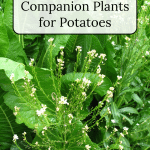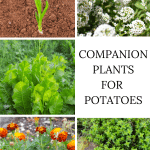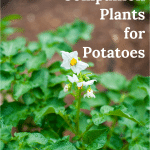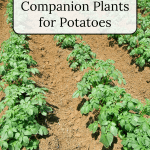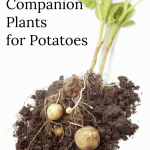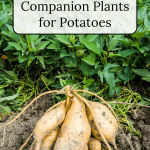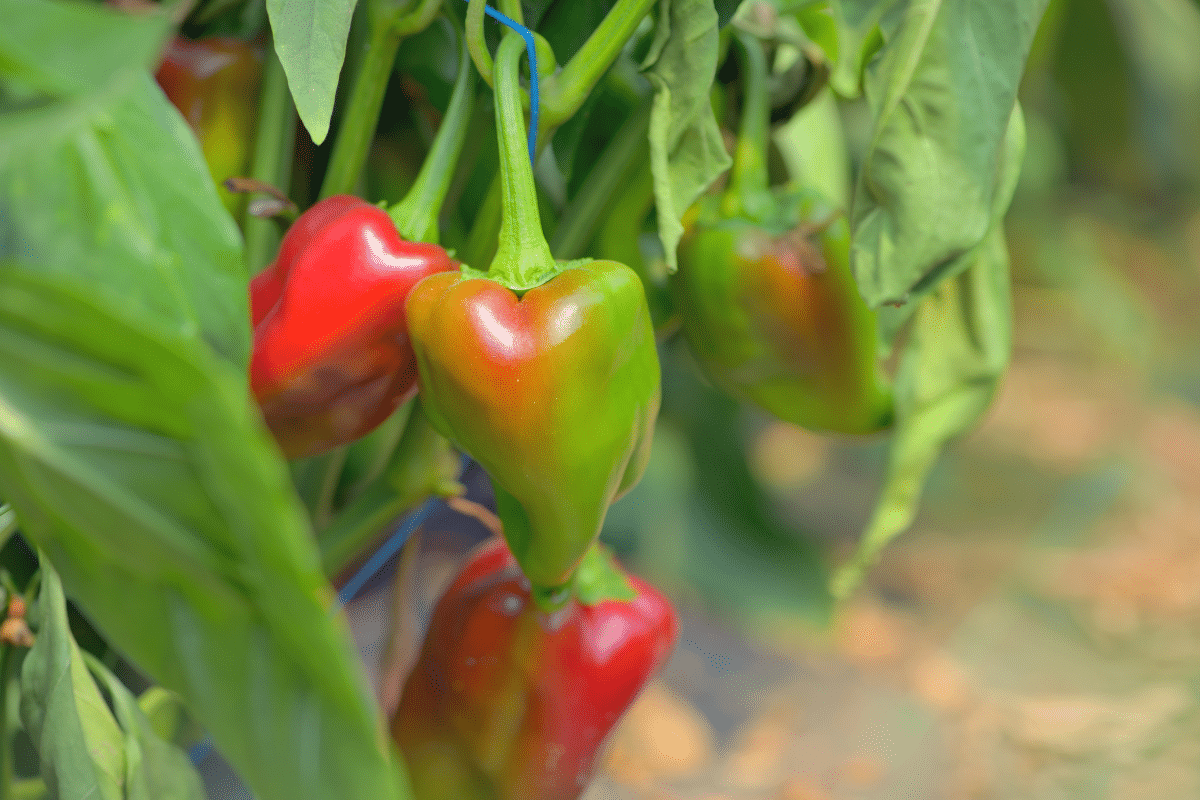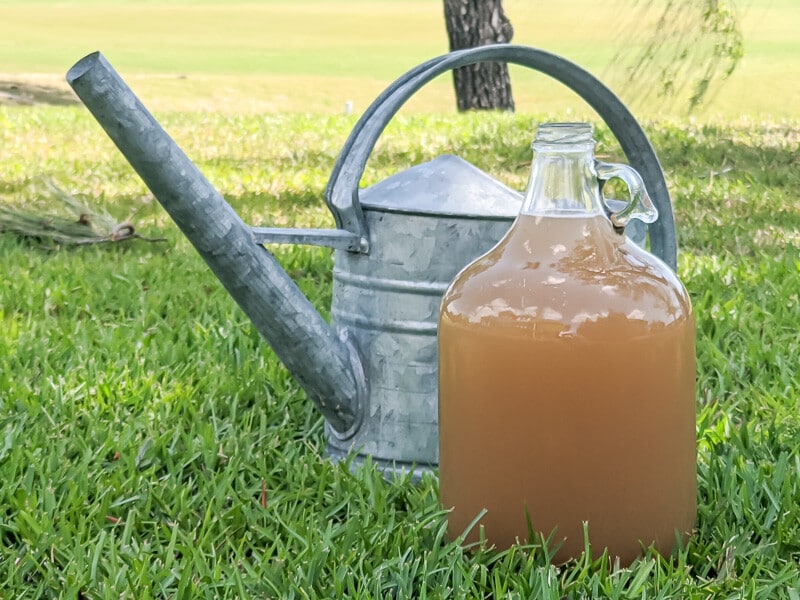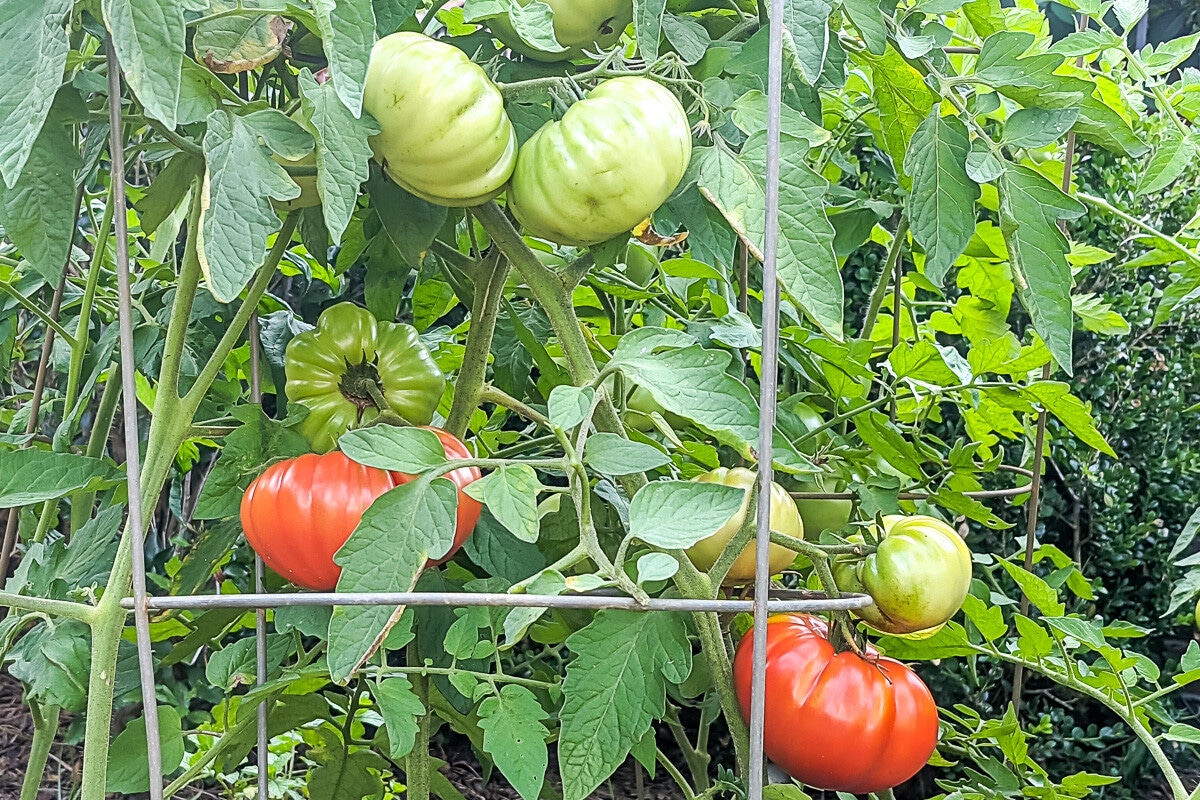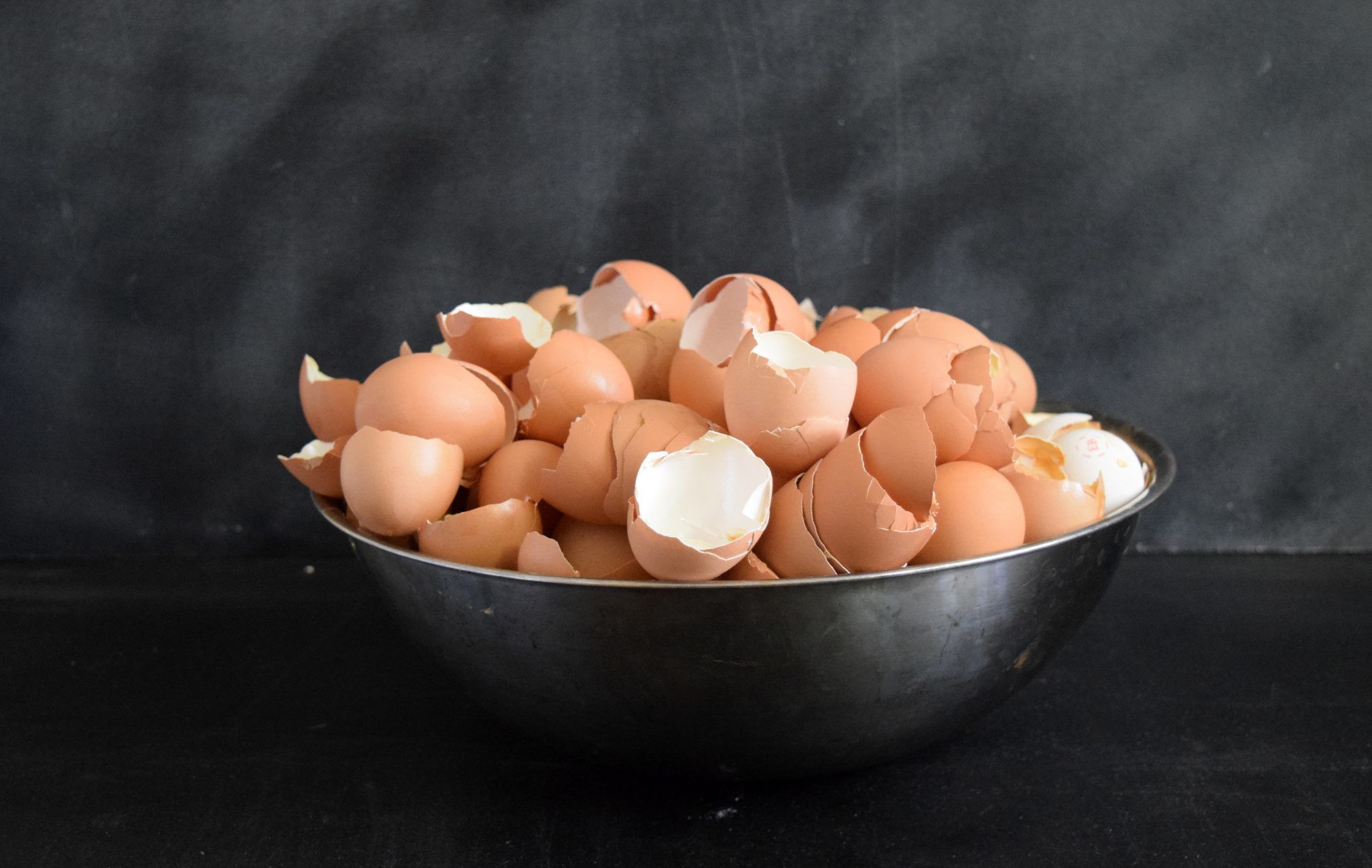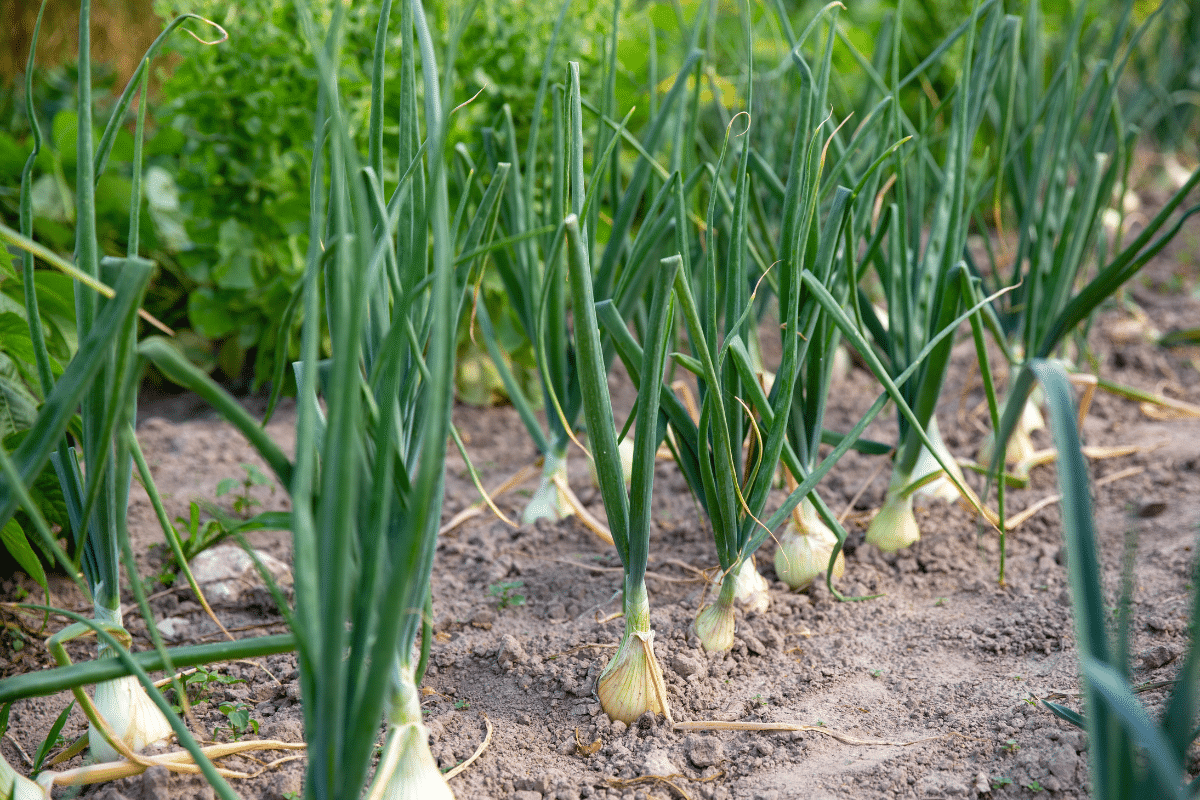Potato Companion Plants
If you’re searching for the next plant to add to your home garden, look no further than the versatile and handy potato! Potato plants come in all kinds of varieties, making your home-grown and home-cooked meals more diverse and unique. But before you run to the nearest nursery to take home your very own potato plant, you’ll want to get familiar with the potato companion plants.
Companion planting is the perfect strategic method to ensure your plants grow healthily and thrive as well as they can! When adding a new veggie to the garden, it helps first to do a little research to discover what other plants you may want to have near it and which ones to keep far away.
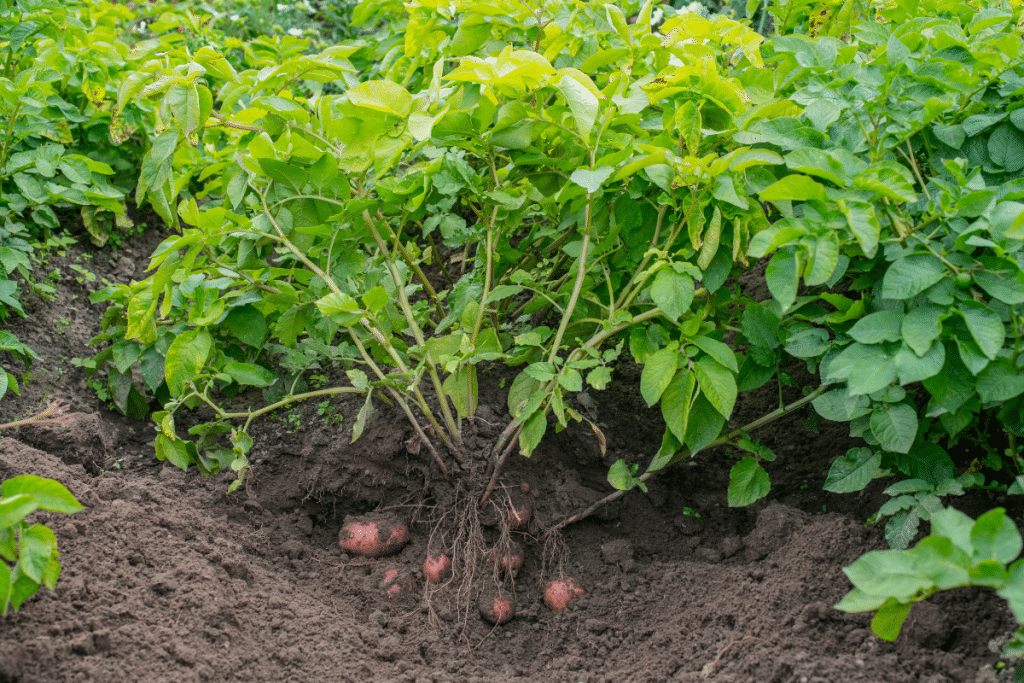
Table of Contents
how to grow healthy and abundant potatoes
Potatoes are prone to a variety of diseases and attack by a number of pests. Verticillium Wilt, Early Blight, Black Leg, and Black Rot are just a few. In terms of the pests that plague potatoes, of course…aphids! But also the Colorado Potato Beetle, Spider Mites, Cutworms, Potato Leafhopper, and Wireworms
The best ways to avoid most diseases and pests in potoates:
- use certified seed
- rotate the crop over successive seasons
- plant when soil is above 50ºF
- keep the soil moist but not soggy
- use companion plants to keep certain pests away and attract beneficial insects.
all about potato companion plants
In this Companion Planting Guide, we’ve covered the companion plants of strawberries, cucumbers, and tomatoes. Now you’ll learn all about growing potatoes! Before we continue, read more about companion planting if you haven’t yet. Without this basic knowledge, your gardening efforts may not yield the most beneficial results.
Before you know it, you’ll have a well-planned and flourishing home garden with a bit of help and guidance from my Companion Planting series! Now, Let’s dive right in!
If you didn’t yet know, potatoes are root vegetables that grow underground. Therefore, the best companions for your potato plants will often be those that don’t compete for nutrition and moisture, and will not impede on the root veggie’s growth by primarily taking up space above ground.
But it’s never that simple, is it? Several root vegetables also benefit the potato plant by repelling plant-destroying pests.
Potatoes are considered a generally easy crop to grow as long as you put some thought into the type of soil you use, your local weather, and sun exposure. However, they are even more effortless to grow in your home garden when you choose the right plants to accompany the potatoes.
Continue reading to discover which plants are the perfect friends for your potato plants!
10 potato companion plants
corn
You’ve heard of the saying “opposites attract,” right? Well, that’s precisely why corn and potatoes are excellent to plant near each other in the garden. Most of the potato plant’s growth occurs underneath the soil, while corn towers as it grows and has a shallow roots system.
Because the two have very different needs and growth patterns, plant corn and potatoes together to maximize space in your garden.
horseradish
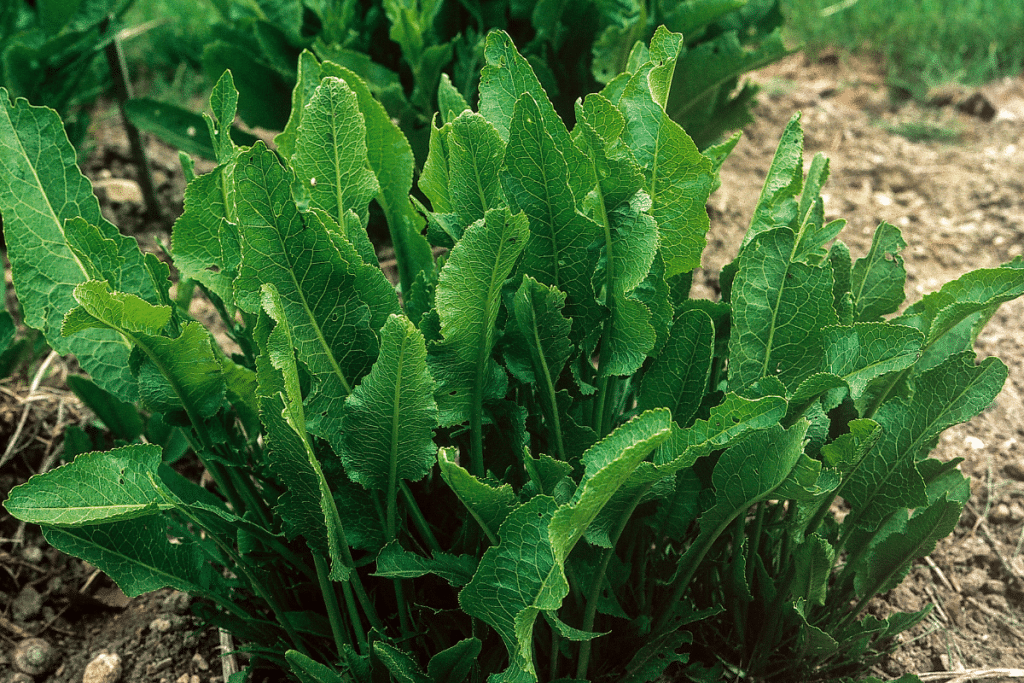
One of the best potato companion plants is horseradish. The mustard-like oil in horseradish helps repel pests famous for ruining your potato plants, like Colorado potato beetles, potato bugs, aphids, and some caterpillars. Horseradish can be invasive, so consider planting it in pots and placing the pots near your potato rows.
Horseradish may also help prevent disease in plants, but it would most likely need to be in the soil or as a soil or foliar treatment with ground horseradish.
herbs
Many herbs are beneficial for potato plants. Not only do they make for a tasty dinner together, but they also protect and help grow your potatoes.
- Thyme- attracts hoverflies that snack on aphids and provides ground cover.
- Cilantro/Coriander – repels aphids, spider mites, and potato beetles and attracts ladybugs, parasitic wasps, and hoverflies.
- Yarrow- attracts beneficial insects. When composted, it is believed to improve the soil’s nutrients.
- Basil- repels thrips and hornworms.
- Sage- invites pollinating honey bees and keeps flea beetles at bay.
- Mint – deters pests, including whitefly, ants, and mice, and the flowers attract bees, butterflies, and hoverflies.
marigolds
Marigolds are excellent companion plants for all kinds of garden veggies, fruits, and herbs. These beautiful sunset-colored flowers are some of the best flowers for deterring pests like the Colorado potato beetle and several others.
lettuce + spinach
The shallow roots of lettuce, spinach, and other similar vegetables not only don’t compete for the underground space needed by potatoes but also act as a living mulch that keeps soil weed-free and moist. Planting lettuce, spinach, and similar veggies is a great use of space between your potatoes plants.
alyssum
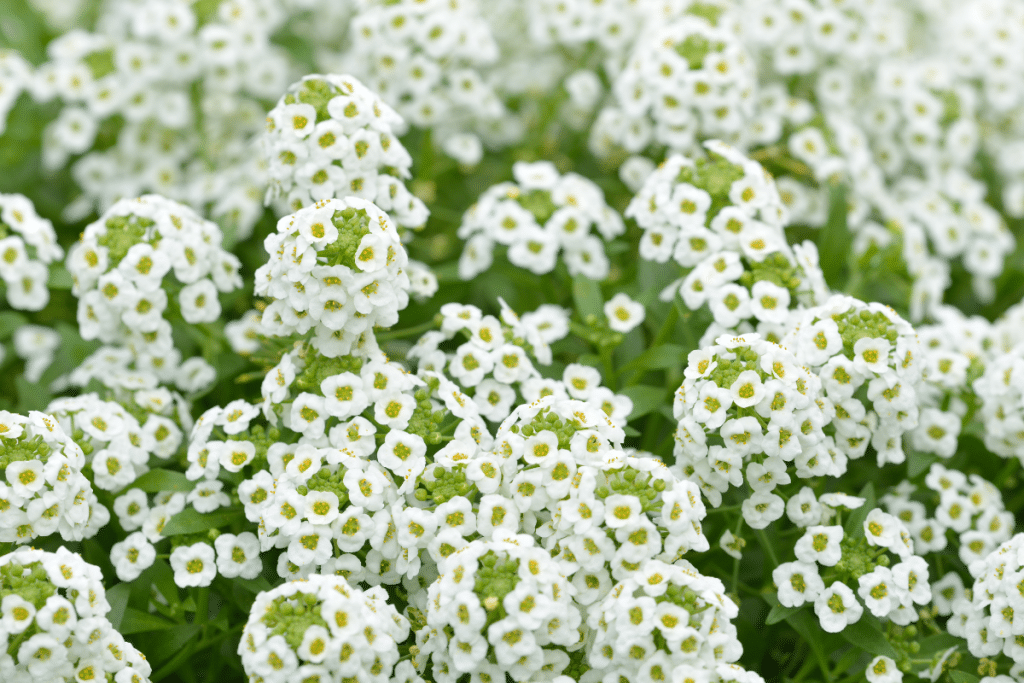
Alyssum plants produce beautiful and plentiful white blooms and cover a lot of ground! Consider planting alyssum alongside potatoes to keep the soil moist while attracting beneficial insects, like parasitic wasps that consume pests. Plus, they are a pretty addition to any home garden!
garlic, onions, + leeks
The strong smell of garlic, onions, and leeks (alliums in general) deter and confuse certain pests, and they have shallow roots, so won’t steal space or nutrients from your potatoes.
brassicas
The cabbage plant and its relatives are excellent friends for your potatoes. Crops like broccoli, cauliflower, collard greens, cabbage, and kale have shallow roots, making them no threat for space near your potato plants, and they don’t compete for nutrients.
parsley
I don’t know if this is folklore or science ( I was unable to find sources), but it is believed that growing parsley alongside potatoes improves the flavor of the tubers. Even if that is a bit of wishful thinking, it is worth planting parsley alongside potatoes as the herb is shown to deter pests such as aphids, spider mites, armyworms, earworms, and beetles,
legumes
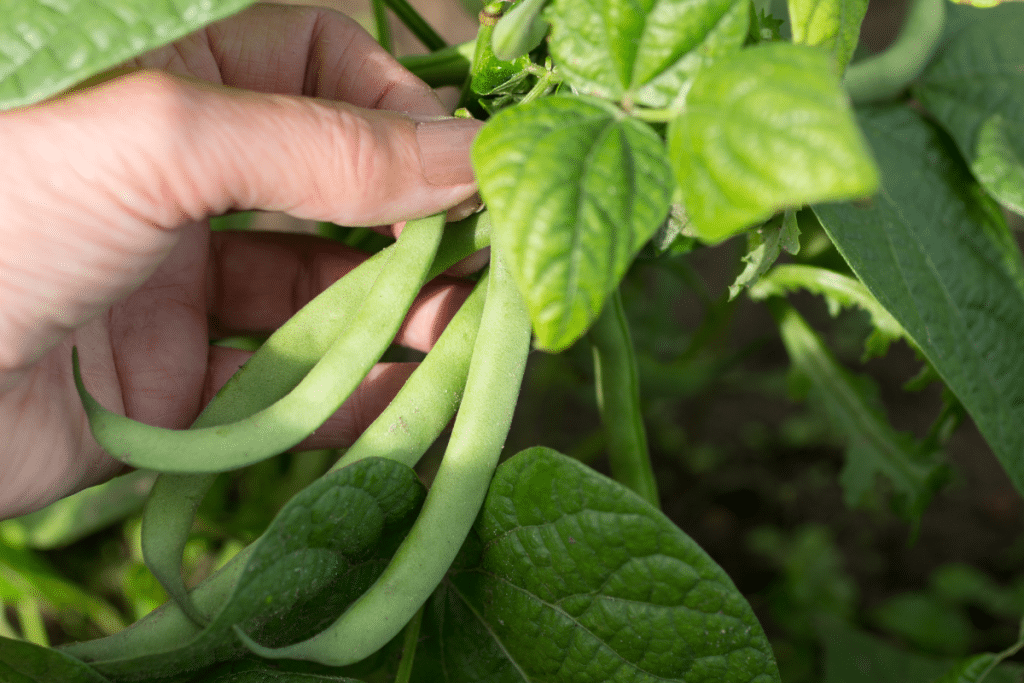
Improve the soil around your potato plants by incorporating legumes like peas and green beans. These nitrogen-fixing plants enhance the ground to help the potatoes thrive. In turn, potato plants keep Mexican bean beetles away from vulnerable legumes.
what are NOT good potato companion plants?
There are two sides to the companion planting method—Just as there are beneficial plant relationships, there are harmful ones. Some of the biggest issues with growing potatoes are the diseases they may develop, including blight. Therefore, you want to plant potatoes far from other plants susceptible to blight because they may transfer the disease to the potatoes.
Additionally, potatoes require plenty of nutrients, and several plants will try to take them for their own. So, if the two plants need the same nutrients, they won’t make for the best companion plants as they compete for them. And finally, there are root plants that compete for the underground space your potato plants need.
Avoid planting potatoes with the following plants in your vegetable garden:
nightshades
Other members of the Nightshade Family (tomatoes, eggplant, other potatoes, and peppers) should be kept away from your potatoes. Growing plants from the same family will encourage even more diseases and harmful pests.
cucumbers
Cucumbers are prone to introduce potato blight, and potatoes rob cukes of water and nutrition, so they are no bueno as planting partners. The same applies to watermelon and cantaloupe, as potatoes rob them of the water they need.
certain fruit trees
Apple, peach, and cherry trees attract blight, damaging your potato crop.
root crops
Root crops like carrots, turnips, and parsnips compete for space with potatoes. And harvesting one will likely damage the other.
raspberries
Potatoes can encourage a blight that will damage your Raspberry crop.
squash + pumpkin
Squash and pumpkins compete for the same nutrients as potatoes, so they should be kept apart.
asparagus
Asparagus compete for underground space, and asparagus is believed to stunt the growth of potatoes.
what’s next for your companion planting guide?
Congrats on getting through yet another chapter of my Companion Planting Guide! With all the companion plants of tomatoes, cucumbers, strawberries, onions, peppers, and potatoes in your back pocket, you’re off to a terrific start with growing a flourishing home garden!
And if you haven’t yet, pop on over to view and print the chart for those five fruits and veggies we’ve covered thus far.
Remember to start putting this method to work, and keep checking in for more companion planting tips and tricks!
Bookmark this page or pin the following image to refer back to this post on Potato Companion Plants in the future.
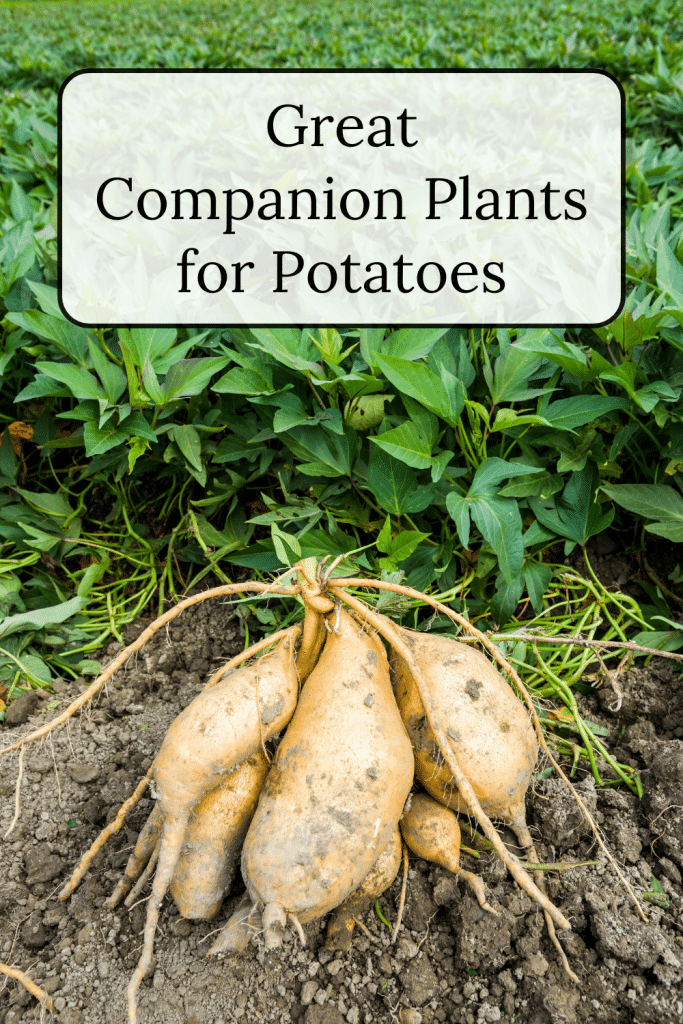
Thanks so much for spending a few minutes of your busy day with me!
To ensure you don’t miss future content, pop your email in the pale green box on the right or click here. I usually send one email weekly, so I won’t inundate your inbox. I’m sensitive to an overflowing email inbox!
We will only use your email address to send you emails, no more than 1-2 weekly. In addition, you will have access to my growing library of knit & crochet patterns and other printables. Check back often as this library will continue to grow. You can unsubscribe anytime by emailing me or clicking on the “unsubscribe” link at the bottom of all emails.
And you can access many of the products I refer to on my Nourish and Nestle Amazon Page. You can access it here.
So, if you’d like to participate in the ‘subscriber benefit’ action, simply subscribe to Nourish and Nestle here or use the form on the right sidebar. It’s slightly towards the top.
I have sent all my subscribers the link to the Subscriber Benefits Library. If you missed it or misplaced it, let me know.
Until next time…


